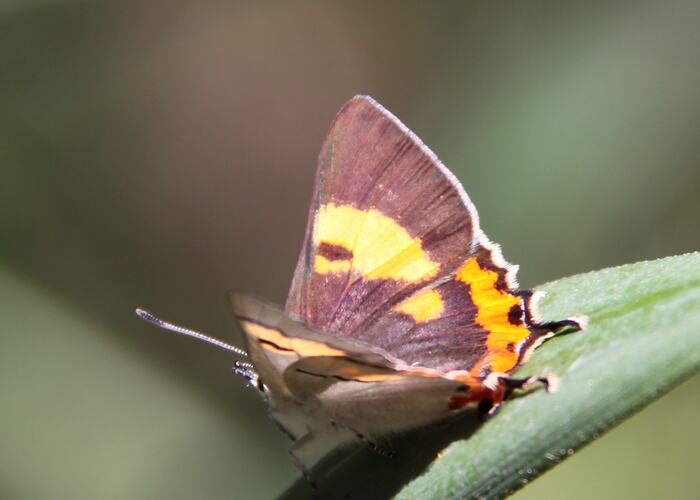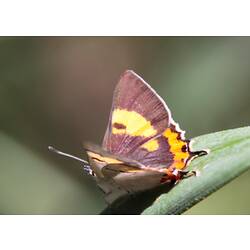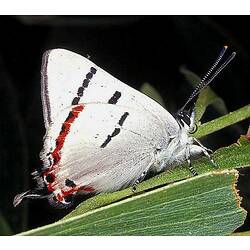General Description
Above: brown-black with central orange patch to each wing, hindwing with orange edge and a black tail. Below: grey with black markings and a red edge to hindwing. Wingspan up to 3 cm.
Biology
Silky Hairstreak butterflies emerge in early spring. Their caterpillars feed on Blackwood and Silver Wattle trees. Strong-smelling ants tend the caterpillars, protecting them from parasites and gaining sweet secretions for food in return. There are many subspecies, some of which are threatened in parts of their range.
Distribution
South-eastern mainland Australia and Tasmania.
Habitat
Open eucalypt forests and woodland areas.
More Information
-
Animal Type
-
Animal SubType
-
Brief Id
Clubbed antennae, without eyespots, tails on hindwing.
-
Colours
Brown, Black, Yellow, Red, Orange, Grey
-
Habitats
-
Diet
Nectar
-
Endemicity
-
Conservation Statuses
CITES: Not listed, FFG Threatened List: Not listed, EPBC Act 1999: Not listed, IUCN Red List: Not listed
-
Plants
Wattle trees
-
Flight Start
August
-
Flight End
January
-
Taxon Name
-
Scientific Author
Blanchard, 1848
-
Common Name
Silky Hairstreak
-
Kingdom
-
Phylum
-
Subphylum
-
Class
-
Order
-
Family
-
Genus
-
Species Name
chlorinda



